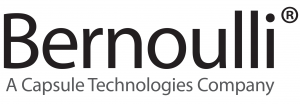Bernoulli case study details multi-hospital medical device connectivity
Bernoulli, the real-time leader in patient safety, has published a new case study detailing its successful efforts to bring medical device integration to Virtua, one of New Jersey’s largest non-profit, multi-hospital health systems.
Utilizing Bernoulli’s standards-based, open architecture Bernoulli One™ system enabled Virtua to bring medical device integration and connectivity across a complex healthcare ecosystem with an integrated, scalable, secure, and cost-effective web-based platform.
Virtua’s need for medical device integration and connectivity grew in part to free clinicians from writing out hundreds of patient data numbers from scores of different devices and machines every day in the course of care delivery. The health system wanted a plug-and-play medical connectivity paradigm that was uniform across different departments, could seamlessly interface with their Epic EHR, and could easily scale with the health system’s future growth.
With the conclusion of the Phase I integration in Virtua’s Perioperative Department, which includes Endoscopy, ECT and Interventional Radiology, the health system has realized complete electronic documentation, which has allowed clinicians to devote more of their time facing the patient and meeting their care needs.
Phase II will focus on Virtua’s Critical Care Unit, which includes the ICU and NICU/PICU, and will integrate the units’ physiological monitors, ventilators, anesthesia machines, smart tourniquets, and brain activity monitors.
Bernoulli One™, the company’s flagship platform, is the market’s only real-time, end-to-end, connected healthcare platform that combines comprehensive and vendor-agnostic medical device integration with powerful middleware, clinical surveillance, telemedicine/virtual ICU, advanced alarm management, predictive analytics and robust distribution capabilities into one solution.
Bernoulli’s vectored event grid architecture enables true interoperability across disparate devices, networks, and systems by utilizing dynamically programmable intelligent appliances at the network edge. The system’s granular level of patient data detail, in real-time, at the point of care for improved decision support applications while also providing flexibility for user-defined configuration and control for device connectivity, monitoring and management, results in better allocation of personnel resources and reduced support costs.
Read the case study here and learn more about Bernoulli’s medical device integration and connectivity solutions here.
Be sure to also follow Bernoulli on LinkedIn and Twitter for the latest news and updates.

 NorthShore University HealthSystem partnered with Nuvon—now Bernoulli—to deliver medical device connectivity and integration in order to provide enhanced quality of care and patient safety at the health system’s four Chicagoland hospitals.
NorthShore University HealthSystem partnered with Nuvon—now Bernoulli—to deliver medical device connectivity and integration in order to provide enhanced quality of care and patient safety at the health system’s four Chicagoland hospitals.
